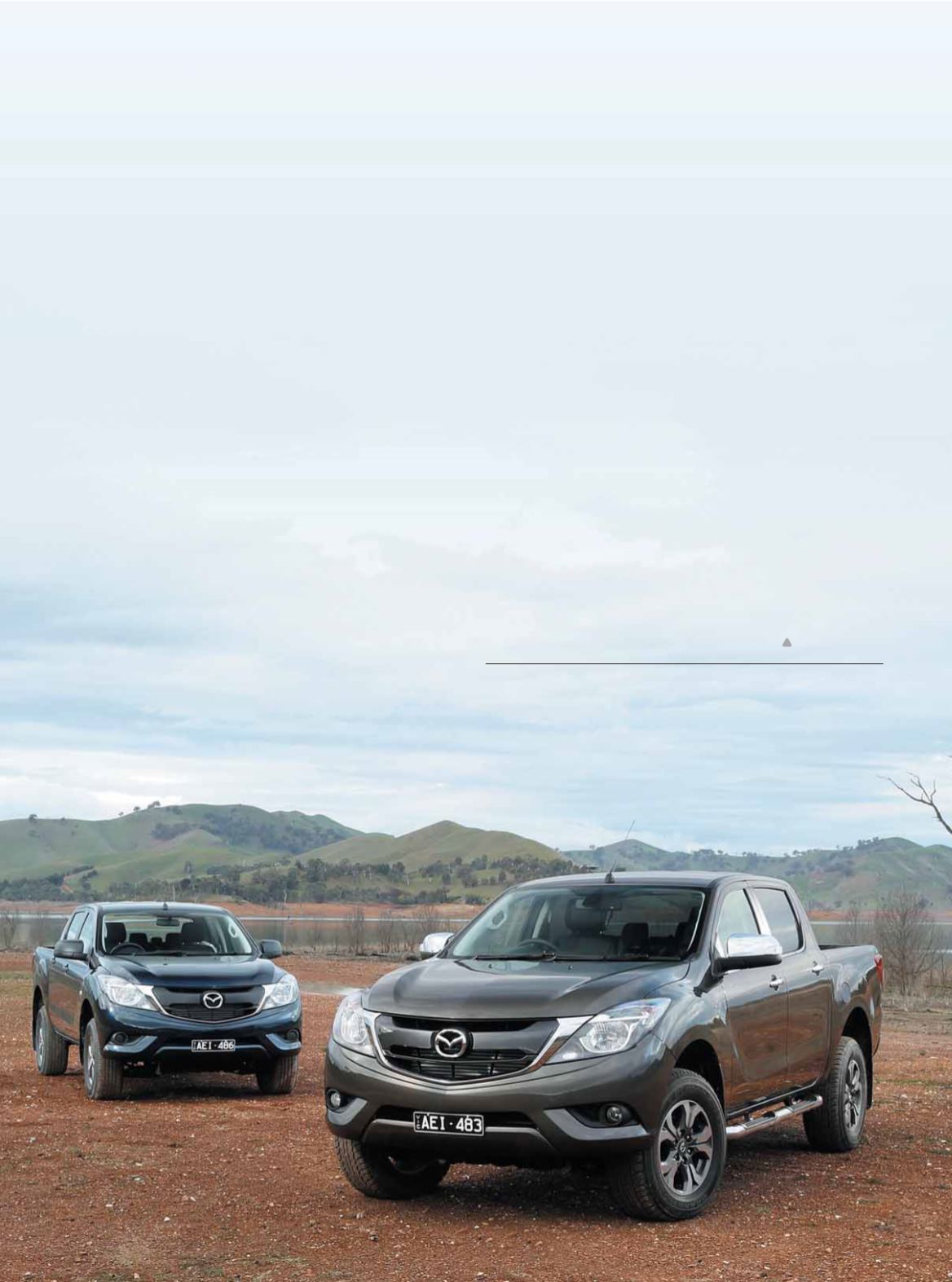

1 1 2
P L UMB I N G CO N N E C T I O N
S UMM E R 2 0 15
A
mong the flurry of new 1T utilities to reach Australian
showrooms this year is Mazda’s upgraded BT-50.
The 2015 BT follows Ford’s closely related PX Mk
II Ranger series, although Mazda’s main emphasis is in
specification tweaks and, in particular, cosmetic changes
aimed at toughening up the BT’s appearance after the current
generation divided opinion in the looks department when
launched in 2011.
As well as the redesigned front face, the latest BT-50 has
new rear combination lamps and alloy wheels, with Mazda
describing the overall job as giving the workhorse “a sportier
and more powerful presence”.
The BT-50’s interior has also been refined to give a higher-
quality feel, with a new centre console infotainment display
among the highlights. On mid-series XTR and flagship GT
model variants, the display comes with a 7.8” high-definition
screen that includes satellite navigation.
A rear-view camera is now on the list of available safety
equipment for the first time, fitted standard to XTR and GT
variants but optional on the lower-spec XT grade.
XT models with bucket seats now benefit from the inclusion
of seat height and lumbar adjustment, while bench seat models
pick up a lockable glovebox. Entry level pick-ups now come
with a tailgate lock, while the XT dual cab ute cuts a more
striking pose with 16” dark-finish alloy wheels.
New features at the XTR level include tubular side steps,
auto-dimming mirrors, rain-sensing windscreen wipers and
automatic on/off headlights. The GT adds tinted windows and
heated/folding exterior mirrors with embedded indicator lights.
Prices have increased between $40 and $810 across the
23-variant BT-50 range, although Mazda says the additional
equipment more than makes up for the impost.
The all-diesel powertrain and three-tiered body style line-up
– the latter covering single, extra (Freestyle) and dual cabs –
carries over from the previous model.
On the engine front, that means Mazda is sticking with a 3.2L
five-cylinder turbo-diesel for all variants other than the entry
grade. It develops 147kW of power at 3,000rpm and 470Nm of
torque from 1,750-2,500rpm, and drives through either a six-
speed manual or six-speed automatic transmission.
The base 4x2 single cab chassis manual uses a 2.2L four-
cylinder turbo-diesel that has not picked up the minor tweaks
as seen in Ranger, meaning it continues to develop 110kW at
3,700rpm and 375Nm from 1,500-2,500rpm. It, too, combines
with either a six-speed manual or six-speed auto gearbox,
depending on the variant.
While the current-generation BT was developed in Australia
as part of Ford’s Ranger program, Mazda played a major role in
development. It has also created its own distinctive range with
unique styling, detail changes in the suspension tuning and
different equipment grades and combinations.
Mazda Australia
www.mazda.com.auMazda BT-50
















